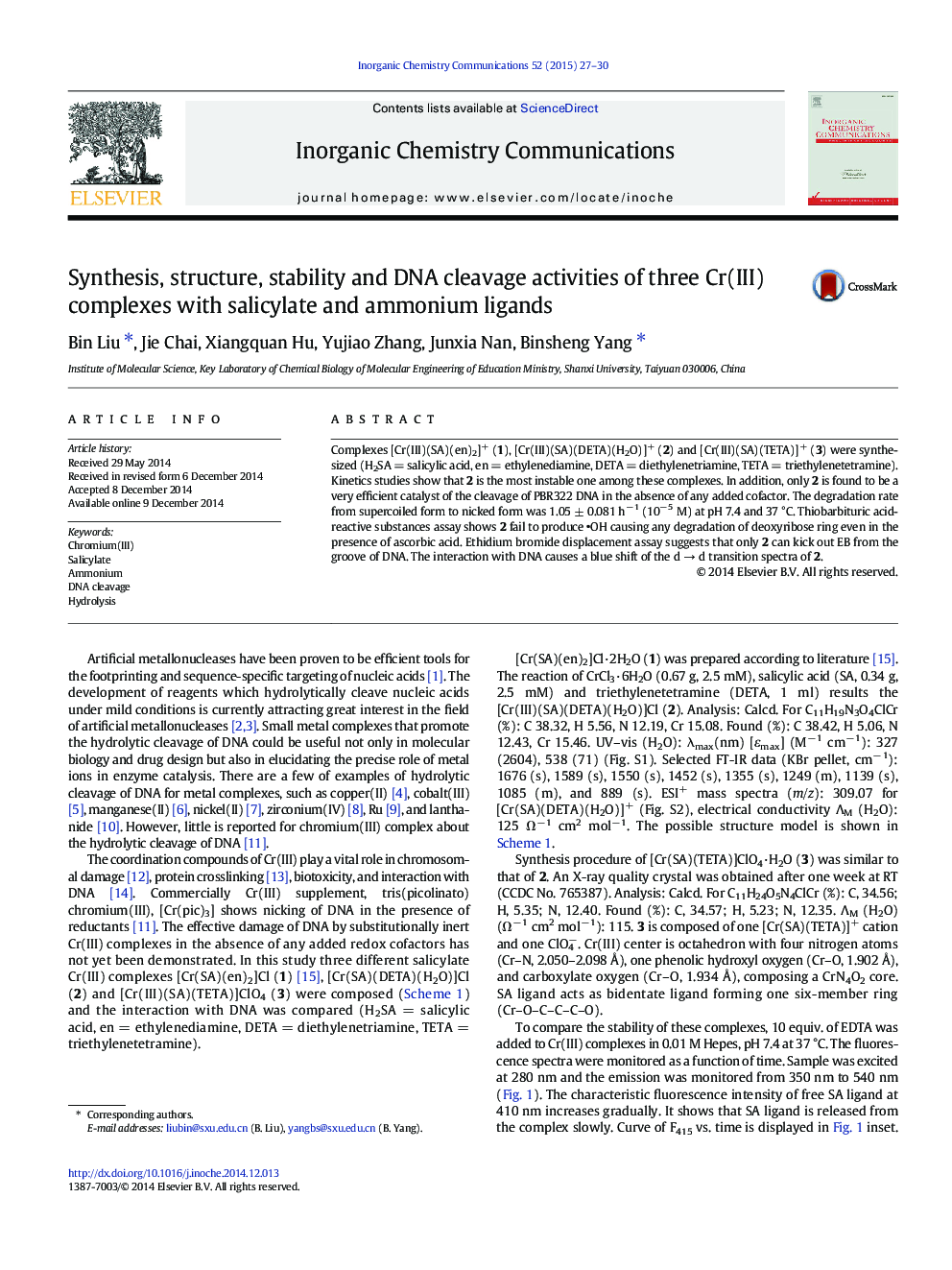| Article ID | Journal | Published Year | Pages | File Type |
|---|---|---|---|---|
| 1305477 | Inorganic Chemistry Communications | 2015 | 4 Pages |
•Synthesis of salicylate chromium(III) complexes with different ammonium ligands•Complex 2 is the most instable one in the presence of EDTA.•Only complex 2 efficiently cleaves DNA in the absence of any added cofactor.
Complexes [Cr(III)(SA)(en)2]+ (1), [Cr(III)(SA)(DETA)(H2O)]+ (2) and [Cr(III)(SA)(TETA)]+ (3) were synthesized (H2SA = salicylic acid, en = ethylenediamine, DETA = diethylenetriamine, TETA = triethylenetetramine). Kinetics studies show that 2 is the most instable one among these complexes. In addition, only 2 is found to be a very efficient catalyst of the cleavage of PBR322 DNA in the absence of any added cofactor. The degradation rate from supercoiled form to nicked form was 1.05 ± 0.081 h− 1 (10− 5 M) at pH 7.4 and 37 °C. Thiobarbituric acid-reactive substances assay shows 2 fail to produce OH causing any degradation of deoxyribose ring even in the presence of ascorbic acid. Ethidium bromide displacement assay suggests that only 2 can kick out EB from the groove of DNA. The interaction with DNA causes a blue shift of the d → d transition spectra of 2.
Graphical abstractSalicylate chromium(III) complex with diethylenetriamine ligand [Cr(III)(SA)(DETA)(H2O)]+ (2) can efficiently cleavage of PBR322 DNA in the absence of any added cofactor.Figure optionsDownload full-size imageDownload as PowerPoint slide
